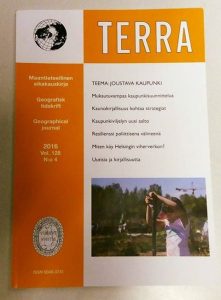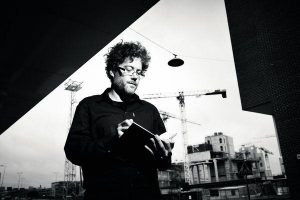Just received my copy of the Routledge Handbook of Literature and Space, edited by Robert T. Tally Jr.
A timely and well-balanced volume stuffed with interesting perspectives on the study of space and literature, with contributions by Marc Brosseau, Andrew Thacker, Eric Prieto, Peta Mitchell, Tim Cresswell – amongst many others.
The book has a separate section on literary urban studies, including my own chapter on “The City Novel: Measuring Referential, Spatial, Linguistic, and Temporal Distances.” From the introduction:
“The world has moved into the urban century, an era in which the majority of the human
population resides in cities. The centuries during which the urban condition, in all its myriad forms and varieties, has gradually become the most common mode of existence have also seen the consolidation and expansion of a vast literature of the city, evoking, scrutinizing and shaping city life in its many ramifications. The advance of the city novel as a genre has correlated with fluctuations in the urban condition, as well as in urban tastes. Similarly, the demise of the city as a dominant literary topos has been read as the equivalent, in literature, of the failure of the city to provide a focal point for radical aspirations. While a vast amount of research has been conducted on the images and experiences of the city in the literary works of individual authors, and on the literatures of particular cities and literary periods, less progress has been made to articulate what
distinguishes city novels from other literary texts. What kinds of generic characteristics are typical for city literature, and what are the consequences of these features for an analysis of the city novel? Given the close correlation between city literature and the interdisciplinary field of urban studies, such an enquiry could also have relevance beyond literary studies, with the potential to broaden our understanding of how city narratives are constructed in the context of education, history, urban planning and policy.
In this chapter, I will argue that the city novel is characterized by a measuring of distances:
distances in space, of course, but also distances between literary and actual locations; distances protagonists or communities cover, and distances felt by the protagonist(s) when confronted by the depth of personal memories and shared histories. My arguments will be substantiated by an analysis of selected New York novels.” (Ameel 2017: 233)
Below, the section dealing with cities in literature:
Part IV. Cities and the Geography of Urban Experience
21. The City Novel: Measuring Referential, Spatial, Linguistic, and Temporal Distances
Lieven Ameel
22. From the City of London to the Desert Island: Defoe and the Writing of Space and Place
Emmanuelle Peraldo
23. The Speculative Fictional Mapping of Literary Johannesburg’s Spaces in Beukes’s Zoo City and Grey’s The Mall
Irikidzayi Manase
24. Space of Difference in Subterranean Toronto
Amy Lavender Harris
25. On This Spot: Materialism, Memory, and the Politics of Absence in Greenwich Village
Elayne Tobin
26. The Following is an Account of What Happened: Plot, Space, and the Art of Shadowing
Jean-François Duclos




